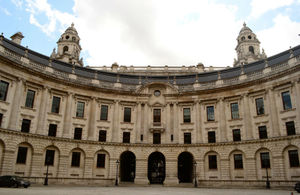From Chatham to Chester and Lincoln to the Lake District - 38 UK places put themselves forward for World Heritage status
Candidates range from the Shetland Isles in Scotland to the Dover Strait in southern England.

From the Shetland Isles in Scotland to the Dover Strait in southern England, Tourism and Heritage Minister John Penrose has today published the list of applications to get on the UK’s new Tentative List of sites for World Heritage status.
Places finally winning through will join the Taj Mahal, the Great Wall of China, The Statue of Liberty and more than 800 other sites on UNESCO’s list of the most iconic and important parts of the planet’s heritage.
Earlier this year, the Government called for nominations from local authorities and others, throughout the UK including the Overseas Territories and Crown Dependencies - 38 came forward. An independent expert panel will now be set up to assess each bid with a new list of potential sites drawn up for submission to UNESCO in 2011.
John Penrose, Tourism and Heritage Minister said: “The UK’s heritage is world class and this list represents the unique variety and history present in all corners of this country and our overseas territories. We wanted a strong and varied list to eventually put to UNESCO and I’m delighted that so many wonderful, diverse places have been put forward.
“Any list that includes Jodrell Bank, the Forth Bridge, Blackpool and the Turks and Caicos Islands certainly doesn’t lack variety. But what all 38 sites have in common is a wow factor and a cultural resonance that makes them real contenders to sit alongside The Pyramids and Red Square in this most distinguished of gatherings.”
The full list
- Arbroath Abbey (Scotland)
- The Birmingham Jewellery Quarter (England)
- The Birth of the Railway Age serial nomination (England)
- Blackpool (England)
- The heroic period of civil and marine engineering in England 1822-1866, Bristol (England)
- Bronte Landscape and Haworth Village (England)
- Brunel’s Great Western Railway (England)
- Buildings of Charles Rennie Mackintosh, Glasgow (Scotland)
- Chatham Dockyard and its Defences (England)
- Chester Rows (England)
- Colchester, Camulodunum and Colonia Victricensis (England)
- Creswell Crags (England)
- The Hill of Derry (Northern Ireland)
- The Dover Strait (England)
- The Flow Country (Scotland)
- The Forth Bridge (Scotland)
- The Fountain Cavern (Anguilla)
- Gorham’s Cave (Gibraltar)
- Gracehill Conservation area (Northern Ireland)
- Jodrell Bank Observatory (England)
- The Lake District (England)
- The Laxey Valley (Isle of Man)
- Historic Lincoln (England)
- Malone and Stranmillis Historic Urban landscape (Northern Ireland)
- Merthyr Tydfil (Wales)
- Merton Priory (England)
- Mousa, Old Scatness and Jarlshof: The Crucible of Iron Age Shetland (Scotland)
- The Royal Sites of Ireland - Navan Fort (Northern Ireland)
- The Norfolk and Suffolk Broads (England)
- Slate Industry of North Wales (Wales)
- Offa’s Dyke (England/Wales border)
- St Andrews, Medieval Burgh and Links (Scotland)
- Island of Saint Helena (Saint Helena Island, South Atlantic Ocean)
- Turks and Caicos Islands (Caribbean)
- Tynwald Hill and environs - Norse assembly sites of North West Europe (Isle of Man)
- Former RAF Upper Heyford (England)
- Wye Valley and Forest of Dean (England/Wales border)
- City of York (England)
Notes to editors
- The Government conducted a review of its UK World Heritage Policy in December 2008. The aim was to help determine whether the UK should continue to nominate sites for World Heritage status and what more we should do for existing sites. The review considered the UK’s approach to World Heritage, the costs and benefits of World heritage status, informed by research undertaken by Pricewaterhouse Coopers (PWC), on the management, protection and funding of sites, and the policy for future nominations.
- An independent expert panel will be set up to advise Ministers on the applications. The selection process will be rigorous, aimed at discouraging at an early stage, those applications which are unlikely to succeed.
- The Government proposes to submit a new Tentative List to UNESCO in 2011, with a view to re-commencing nominating from 2012. Following this, it proposes to continue to make nominations to the World Heritage List, though not necessarily every year.
Press Enquiries: 020 7211 2210
Out of hours telephone pager no: 07699 751153
Public Enquiries: 020 7211 6000